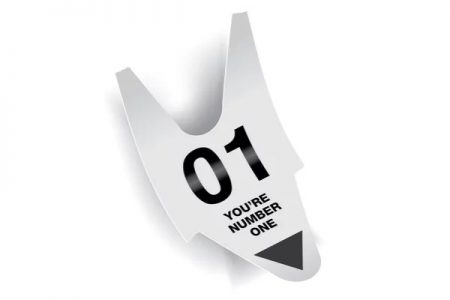What Does a Great Customer Experience Look Like?
 Meeting and exceeding customer expectations in the contact centre has always been a key factor that distinguishes growing, successful businesses from those that struggle to thrive.
Meeting and exceeding customer expectations in the contact centre has always been a key factor that distinguishes growing, successful businesses from those that struggle to thrive.
However, customer experience (CX) expectations are shifting rapidly, in lockstep with the changing way people are experiencing technology in their daily lives and alongside the CX opportunities provided by increased connectivity, big data and AI.
What is great customer experience then, in 2019 and beyond, and what can companies do to ensure that their customer experience strategy is a driver of growth, rather than a pain point?
Focusing on The Omni-Channel Experience
 The number of channels across which customers interact with businesses has multiplied almost exponentially and new channels are still emerging. The days of focusing on bricks and mortar and contact centres are long gone – instead, companies need to juggle channels covering social media, live chat and even personal assistants like Amazon Alexa or Google Home.
The number of channels across which customers interact with businesses has multiplied almost exponentially and new channels are still emerging. The days of focusing on bricks and mortar and contact centres are long gone – instead, companies need to juggle channels covering social media, live chat and even personal assistants like Amazon Alexa or Google Home.
Good CX increasingly means catering for interactions on every popular channel – in-store, phone, web, a multitude of social media platforms and even personal communications and personal assistant tools such as WhatsApp and Google Assistant.
Flexible, API-driven contact centre platforms make doing so far easier, but companies nonetheless need to be familiar with the nuances – and need to be quick on their feet to adopt new channels.
A greater challenge lies in integrating this plethora of customer service channels: how do companies ensure a smooth cross channel customer experience when customers jump from channel to channel while expecting companies to retain knowledge throughout?
For example, customers could use Google Assistant or Amazon Alexa to cancel an order made online. Companies that get this type of omni-channel, cross-channel CX right at every single customer touchpoint will be ahead of their competitors.
The Rise of Opti-Channel
Offering every communication channel possible to the customer, even if that channel is not appropriate for completing their request, is not sensible. An opti-channel means providing the ‘optimum’ channel to deliver the correct outcome at that stage of the customer’s journey.
Instead of offering more channels and integrating them, the customer will benefit from fewer channels that are more relevant to them.
To achieve an opti-channel approach, you must use the vast amount of data your contact centre creates to tailor the CX at a one-to-one level.
For example, an SMS message is ideal for interactions that are short and urgent. SMS has a very high open rate compared to other methods like email. But email works well for information that needs to be referenced later (e.g., receipts, confirmation numbers).
A Real-World Example of Opti-Channel
Previously when a customer would contact Singapore’s DBS Bank about a lost credit card, the bank focused on replacing it as soon as possible. But through the journey mapping process, the bank realised that in the majority of cases the customer has lost their wallet or purse. Now DBS’ focus is on helping them through the process of replacing everything they lost, not just the credit card.
Using the opti-channel approach they know that the best way to discuss a complex process with an upset customer is through voice, so the bank asks customers to report lost cards by calling the contact centre. Agents then send a follow-up SMS message with useful phone numbers.
Normally, adding a step and switching channels would be inefficient but in this case, the bank found a customer who has just lost their cards doesn’t need the added stress of finding a pen and paper.
Personalised Customer Journeys
 Contact centres historically have provided a very ‘linear’ experience. Just think of an IVR experience: “press 1 for sales; 2 for….”. Always the same menu, all the time, whatever reason you are calling in.
Contact centres historically have provided a very ‘linear’ experience. Just think of an IVR experience: “press 1 for sales; 2 for….”. Always the same menu, all the time, whatever reason you are calling in.
The future of customer contact is a personalised service, which identifies the customer and anticipates why they are making contact (via phone, chat or whatever) and offers them a different option based on the context of that interaction.
This context comes from two sources: the contact centre technology itself, typically previous contacts (interaction histories with each channel); and back-end systems such as your CRM/CSM system, logistics system, billing system, warranty system, etc.
Considered Use of AI and Automation
AI aids companies in personalising their products and services: making buying new products easier, and encouraging the consumption of services that customers pay for – ensuring repeat purchases.
Furthermore, AI and automation can help companies meet CX demands even with limited resources. And, all things considered, delivering a great customer experience can stretch budgets.
Take chatbots, for example. Many customer queries – if not all – are highly repetitive and today’s NLP-powered chatbots can readily handle assorted queries across contact centre channels including web, social media and mobile.
By reducing the need for customer service staff to step in, companies can deploy expensive staff in a way that ensures more complex customer queries are given sufficient time for successful resolution – and that ensures a great overall customer experience too.
Indeed, AI and automation (including, for example, robotic process automation or RPA) can also support customer service staff when handling customer needs – speeding up and improving the chances of resolving a customer service issue. Of course, chatbots are also available 24/7, making it much easier to offer round the clock service for at least some customers.
Achieving Excellent Customer Experience
The importance of customer experience is growing in part because it is increasingly easy for customers to switch to different brands. Preventing switching by getting customer service just right involves a concerted effort covering a range of customer service aspects.
The recipe lies in a mix of getting your company’s approach right, while utilising available – and emerging – technology. We think these are the four core areas companies should focus on when trying to offer terrific CX:
– Examine the customer journey
CX success can be defined by a single interaction but is more often built across many interactions over distinct channels. Understanding how these interactions fit together to become the customer journey can help your company find pain points and ensure CX continuity.
– Go beyond contact centre success
Yes, it’s important to make sure customers are left satisfied after phoning in, but CX success goes beyond customer service success. The entire experience your customers have with your company must be seamless and personalised: whether it is interaction with a product or service or a visit to your website.
– Always look for opportunities
We’ve outlined how cutting-edge tech offers new customer service opportunities. CX success is also defined by CX surprises and companies that find ways to unexpectedly delight their customers stand to win over their competitors. Your technology partners can help find these opportunities.
Your connectivity partner
It is not just a matter of contact centre availability: your technology partner must understand the nuances of customer experience success and indeed the entire customer journey. Only then can your company integrate today’s tech advances in a way that truly serves the customer experience.
Finally, companies should note that great customer experience has become a moving target. Decades ago, CX winners had to get two points right: the in-store experience, and call centre services.




